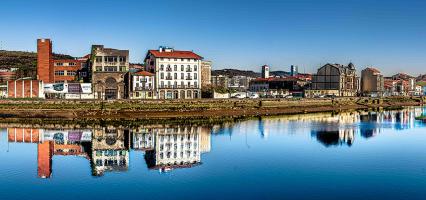Thessaloniki gets ready for its metro launch in November
The underground rapid transit lines have been under construction for almost two decades due to various project delays
 TheMayor.EU logo
TheMayor.EU logo The pilot route has been unveiled in the Murg Valley near Rastatt
The main road in the Murg Valley, near the city of Rastatt, has become an electrically powered hybrid catenary truck route. The eWayBW project started on 28 July 2021 and will run for the next three years with the aiming to test out climate-friendly technology. It was unveiled by Rita Schwarzelühr-Sutter, Parliamentary State Secretary in the Federal Environment Ministry, and Winfried Hermann, the Transport Minister of Baden-Württemberg.
The route is a pilot project for electrically operated hybrid overhead-line trucks (HGVs).
In simple terms, this means trucks that are equipped with a catenary - a U shaped conductor connected to two points that link to the power grid lines. It is a familiar technology since some trams and trains use the same mechanism.
Trucks travelling the eWayBW route will not only be operating on electrical power during its 18 kilometres, but they will also be able to recharge their batteries, helping them sustain longer routes.
Currently, the capacity of a lithium-ion battery powering an electric vehicle is around 200 km. However, at this time the overhead power lines cover less than a quarter of the route.
Accompanying scientific research will focus on aspects of energy supply as well as effects on noise, air pollutants and road planning measures.
Federal Highway 462 in the Murgtal was chosen for the pilot project because every year 510,000 tons of paper are brought to a logistics centre in the town of Kuppenheim in the Rhine valley for three manufacturing companies. As a result, freight trucks are coming in and out day and night, seven days a week.
The implementation of hybrid catenary trucks to cover the nearly 250,000 kilometres travelled per year will have a massive impact. These conditions also provide a controlled testing ground for accompanying research.
State Secretary Schwarzelühr-Sutter remarked that there must be more freight traffic on rails, however, the limited reach of the train network forces policymakers to look for sustainable alternatives in road transportation.
Minister Hermann backed her up, adding that the fact that the energy on the power lines is coming from the Schwarzenbach Dam makes the project even better.
If you want to keep up with how European cities and regions are changing, follow us on Facebook, Twitter and Instagram.

The underground rapid transit lines have been under construction for almost two decades due to various project delays

Now you can get your wine in Talence by paying directly in Bitcoin

That’s because the state has to spend money on updating the railway infrastructure rather than subsidizing the cost of the popular pass

Rethinking renewable energy sources for the urban landscape

The examples, compiled by Beyond Fossil Fuels, can inform and inspire communities and entrepreneurs that still feel trepidation at the prospect of energy transition

Now you can get your wine in Talence by paying directly in Bitcoin

The 10th European Conference on Sustainable Cities and Towns (ESCT) sets the stage for stronger cooperation between the EU, national and local level to fast track Europe's transition to climate neutrality.

At least, that’s the promise made by the mayor of Paris, Anne Hidalgo

The underground rapid transit lines have been under construction for almost two decades due to various project delays

At least, that’s the promise made by the mayor of Paris, Anne Hidalgo

Hostal de Pinós is located in the geographical centre of the autonomous region

Despite its church-y name, the district has long been known as the hangout spot for the artsy crowds

Urban dwellers across the EU are having a say in making their surroundings friendlier to people and the environment.

Forests in the EU can help green the European construction industry and bolster a continent-wide push for architectural improvements.

Apply by 10 November and do your part for the transformation of European public spaces

An interview with the Mayor of a Polish city that seeks to reinvent itself

An interview with the newly elected ICLEI President and Mayor of Malmö

A conversation with the Mayor of Lisbon about the spirit and dimensions of innovation present in the Portuguese capital














